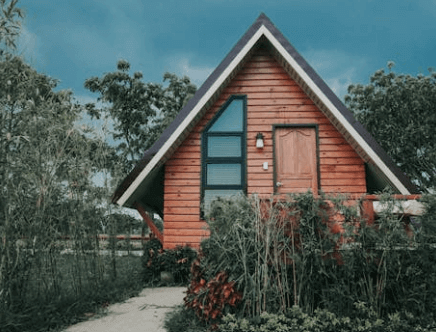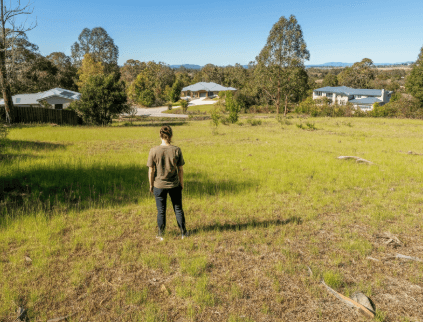Dreaming of a tiny home nestled in just the right spot? You’re not alone. With over 73% of Americans open to living in tiny homes, the demand for affordable and sustainable living is skyrocketing. However, buying land for tiny homes can be a unique challenge, from navigating zoning laws to understanding property utilities. Experts Steve Daria and Joleigh, renowned real estate investors and cash land buyers emphasize the importance of researching plots that align with your tiny living goals. Did you know that 70% of tiny home dwellers own the land their home sits on, highlighting the importance of thoughtful planning? This guide will cover essential tips for buying land for tiny homes, ensuring your investment aligns perfectly with your lifestyle. Don’t leave these critical steps to chance. Book a free discussion today with Steve Daria and Joleigh to make your dream a reality!
Key Points
- Understand Zoning Regulations and Restrictions: Before purchasing land for your tiny home, verify that the property complies with local zoning laws and building requirements. Some areas may have minimum size restrictions or may not allow tiny homes at all.
- Evaluate Utility Access and Infrastructure: Ensure the land has access to essential utilities, including water, electricity, and sewage systems. If these options aren’t available, consider researching alternative solutions, such as solar power or composting toilets, to meet your needs.
- Assess the Terrain and Location: Evaluate the land’s suitability for building by examining the terrain, drainage, and soil quality. A well-drained and leveled plot can save you time and money during construction.
- Calculate Total Costs, Including Hidden Expenses: The cost of the land is only the starting point—be sure to account for additional expenses like permits, utility hookups, and taxes. A realistic budget will ensure you avoid surprises during the building process.
- Choose a Location That Matches Your Lifestyle: Consider how the land’s location aligns with your lifestyle preferences, such as proximity to work, outdoor activities, or a tiny home community. A carefully chosen spot can significantly enhance your tiny living experience.
What is a tiny home, and why are they popular?
A tiny home is a small, efficient house that typically measures less than 500 square feet.
It’s designed to maximize space while providing all the essential amenities, making it perfect for those who value minimalism and sustainability.
Tiny homes are becoming increasingly popular, offering a more affordable alternative to traditional houses with substantially lower construction and maintenance costs.

They also offer flexibility, allowing owners to place them on private land, in tiny home communities, or even on wheels for mobility.
For those considering buying land for tiny homes, these compact structures provide a unique opportunity to design a personalized living space perfectly suited to their lifestyle.
Tiny homes are also eco-friendly, as they use fewer resources and promote a low-waste lifestyle.
With 73% of Americans open to living in tiny homes, they’ve become an appealing choice for those seeking financial freedom and simplicity.
For success, securing the right property is key when buying land for tiny homes.
Get Started: Get Your Cash Offer Below…
We are direct land buyers. There are no commissions or fees and no obligation whatsoever. Start below by sharing where your property is and where we can send your offer…
Do I need to buy land for a tiny home?
You don’t always need to buy land for a tiny home, as it depends on your specific situation and plans.
Some people choose to place their tiny homes in established communities that allow for tiny living, while others rent space on private property.
However, buying land for tiny homes is an excellent option if you want more freedom to customize your space or ensure long-term stability.
Owning land allows you to control the location, layout, and features of your space, such as adding gardens or outdoor seating areas.
It’s important to research zoning laws and building permits in the area to make sure your tiny home is allowed on the land you’re considering.
For those who value privacy or prefer to live off the grid, purchasing land can be especially appealing.
Additionally, real estate ownership is often a sound investment, as land typically appreciates in value over time.
Whether you choose to rent or purchase, finding the right setup that fits your lifestyle is the key to enjoying life in a tiny home.
What should I look for in land for a tiny home?
- Zoning and Permits: Before proceeding, confirm that the property’s zoning regulations allow for tiny homes to ensure compliance with local rules. Taking this step is crucial to prevent any legal complications when buying land for tiny homes.
- Access to Utilities: Consider the availability of essential utilities, such as water, electricity, and sewage. If you’re planning to live off-grid, ensure the land can support alternative systems, such as solar panels and septic tanks.
- Topography and Soil: Look for land with stable soil and a gentle slope for easier building and drainage. Avoid properties with flooding risks or rocky terrain that could increase construction challenges.
- Proximity to Amenities: Consider how close the land is to grocery stores, medical services, and work. Being too far from basic services can make daily life inconvenient.
- Neighborhood and Privacy: Examine nearby properties and the neighborhood vibe to see if it aligns with your lifestyle. If you value quiet and privacy, avoid land near busy streets or heavily populated areas.

How much does land for tiny homes typically cost?
The cost of land for tiny homes depends on location, lot size, and the property’s condition.
On average, the price per acre can range from a few thousand dollars in rural areas to tens of thousands in urban or desirable locations.
When buying land for tiny homes, additional expenses, such as survey fees, permits, and utility connections, may arise and could influence your overall budget.
Smaller plots of land, such as one-quarter or half an acre, are more affordable and ideal for tiny home living.
If you’re looking for land in a tiny home community, costs might also include homeowners’ association fees.
Rural areas often offer cheaper land, but they may require additional investment in utilities such as water and septic systems.
Urban and suburban plots are generally more expensive but often offer convenient access to amenities and infrastructure.
Always compare options and factor in hidden expenses to make a well-informed decision.
Are there special permits required for placing a tiny home on private land?
- Zoning Permits: Zoning permits are often required to place a tiny home on private land. These permits ensure that your tiny home complies with local zoning laws, which may restrict the location of tiny homes.
- Building Permits: Even for a small structure like a tiny home, obtaining a building permit might be necessary. This ensures that your home complies with safety regulations, including structural integrity and proper construction standards.
- Utility Permits: If your tiny home will be connected to utilities such as water or electricity, you may need to obtain utility permits. Local authorities often require this to ensure safe and legal connections to public or private utility systems.
- Septic System Permits: For land without a sewage system, a permit is usually necessary to install a septic system. This is crucial for managing wastewater in a safe and environmentally responsible manner.
- Foundation Permits: If your tiny home won’t be on wheels and requires a foundation, you might need a foundation permit. This ensures that the foundation is both secure and compliant with local building codes.
- Environmental Permits: Some areas require permits to protect the local environment when modifying land. These can include restrictions on tree removal, water usage, or building near protected habitats.
- Occupancy Permits: An occupancy permit may be required before occupying your tiny home. This confirms that all legal requirements have been met after buying land for tiny homes, making your space safe and ready for living.
What are the steps for closing on the land purchase?
Closing on a land purchase involves several key steps to ensure the process proceeds smoothly.
The first step is to review and sign a purchase agreement that clearly explains the terms of the sale.
Next, conduct a title search to ensure the land has no legal issues or unpaid liens.
Once that’s clear, arrange for a land survey to confirm the property boundaries and any restrictions before buying land for tiny homes.
Afterward, work with your lender or use cash, if applicable, to secure financing for the purchase.
During this time, you may also need to handle permit applications, especially if you plan to build.
Once everything is prepared, you’ll head to the closing meeting to finalize the paperwork and pay any remaining fees.
Experts like Steve Daria and Joleigh, seasoned real estate investors and cash land buyers, can help guide you through the process with ease.
When you’re ready to take the next step, partner with trusted professionals who bring the expertise and support you need to succeed.
Their dedication and guidance are focused on helping you reach your goals with confidence.
**NOTICE: Please note that the content presented in this post is intended solely for informational and educational purposes. It should not be construed as legal or financial advice or relied upon as a replacement for consultation with a qualified attorney or CPA. For specific guidance on legal or financial matters, readers are encouraged to seek professional assistance from an attorney, CPA, or other appropriate professional regarding the subject matter.
